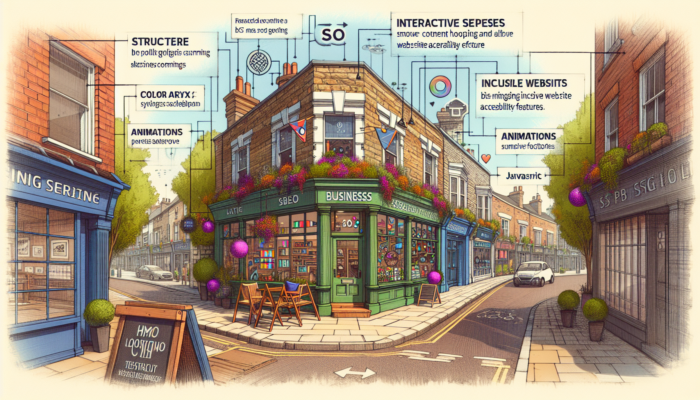Table of Contents
ToggleUnlocking the Secrets of Successful PPC Advertising: Your Ultimate Guide
Understanding PPC Advertising: How It Works and Why It Matters

PPC advertising, which stands for pay-per-click advertising, represents a crucial component of digital marketing that allows businesses to effectively promote their products or services across multiple platforms. In this model, advertisers only incur costs when users actually click on their ads, distinguishing it from traditional advertising approaches where payments are based on ad placement rather than engagement. The primary goal of PPC advertising is to drive targeted traffic to specific online destinations, ultimately increasing the likelihood of conversions and fostering valuable customer interactions.
The mechanics behind PPC advertising are relatively simple yet effective. Advertisers select specific keywords relevant to their offerings, enabling their ads to appear when users search for those terms. These advertisements are typically featured prominently at the top or bottom of search engine results pages (SERPs) or embedded within social media feeds. The competitive bidding system inherent to PPC allows advertisers to compete for ad placements based on their willingness to pay per click. Key factors such as bid amount, ad quality, and overall relevance significantly influence the results of these ad auctions.
For marketers aiming to enhance their return on investment (ROI), grasping the complexities of PPC advertising is essential. By focusing on high-intent keywords, companies can attract users who are more likely to convert—be it through purchases, newsletter subscriptions, or inquiries for additional information. Successful campaigns require ongoing adjustments and optimizations, including tweaking bids, refining ad copy, and analyzing performance metrics to achieve optimal outcomes.
The Evolution and Revolution of PPC Advertising Over the Years
The journey of PPC advertising traces back to the mid-1990s, a pivotal time that marked the dawn of online advertising. The first PPC service launched in 1996 by GoTo.com, which later became Overture Services, fundamentally transformed the advertising landscape by enabling precise targeting and measurable results for marketing campaigns.
As time progressed, the landscape of PPC advertising expanded dramatically, particularly with the introduction of Google AdWords in 2000. Google incorporated numerous features, such as the quality score, highlighting the importance of ad relevance and user experience. This shift not only enhanced ad placements but also improved the overall effectiveness of PPC campaigns. As more advertisers recognized the potential of PPC advertising, competition increased, leading to innovations like advanced campaigns and remarketing strategies.
Technological advancements have also played a significant role in shaping PPC advertising. The emergence of machine learning and data analytics has equipped advertisers with sophisticated tools for advanced targeting and optimization strategies. This ongoing evolution compels businesses to stay informed about the latest trends and best practices, ensuring they maintain a competitive edge in the rapidly changing landscape of digital marketing.
Key Players Dominating the PPC Advertising Landscape
The PPC advertising ecosystem is shaped by several major platforms that empower businesses to execute their advertising strategies effectively. Google Ads is the leading platform, commanding a substantial share of the PPC market. With its extensive reach and advanced targeting capabilities, Google has become the go-to platform for advertisers looking to leverage pay-per-click strategies effectively.
Bing Ads serves as another significant platform, offering a viable alternative to Google Ads. Although it holds a smaller market share, Bing Ads can effectively engage audiences using Microsoft’s search engine. Moreover, social media giants like Facebook and Instagram have incorporated PPC advertising options, allowing brands to connect with users based on their interests and behaviors.
Emerging platforms like TikTok and Pinterest are making a notable impact in the PPC advertising sector, providing unique opportunities to reach younger audiences through engaging and creative ad formats. As the industry continues to evolve, businesses must explore a diverse range of platforms to maximize outreach and ensure their PPC strategies resonate with their target demographics.
Crafting a Winning PPC Campaign: Proven Strategies for Success

Setting Clear and Measurable Goals for Your PPC Campaign Success
Successful PPC advertising campaigns are built on a foundation of clearly defined objectives. Without specific goals, it becomes challenging to assess success or evaluate the effectiveness of your strategies. Establishing SMART goals—specific, measurable, achievable, relevant, and time-bound—creates a solid framework for your campaign.
For example, if your goal is to boost website traffic, you might set a target such as “Increase monthly website traffic by 20% within three months through PPC advertising.” This goal is specific, measurable, and time-sensitive, facilitating straightforward tracking and evaluation. Other common objectives may include generating leads, increasing sales, enhancing brand awareness, or launching a new product into the market.
Once objectives are clearly defined, it is essential to align your PPC advertising strategies with these goals. This alignment ensures that every component of your campaign, from keyword selection to ad copy, works cohesively to support your overarching aims. Additionally, regularly revisiting and adjusting your goals ensures adaptability to market changes and optimizes campaign performance for superior outcomes.
Conducting Comprehensive Keyword Research and Selection for Optimal PPC Advertising
keyword research is a cornerstone of successful PPC advertising. Identifying the most effective keywords can significantly impact the success of your campaigns. The first step involves brainstorming potential keywords relevant to your business and the products or services you offer.
Utilizing tools like Google Keyword Planner, SEMrush, or Ahrefs can help uncover search volumes, competition levels, and related keywords. Strive to identify keywords that balance high search volume with manageable competition to maximize your chances of securing ad placements at a reasonable cost.
Long-tail keywords are particularly valuable in PPC advertising, as they tend to be less competitive and more specific, often resulting in higher conversion rates. For instance, instead of targeting a broad term like “shoes,” consider a long-tail variation such as “running shoes for flat feet.” This specificity attracts a more focused audience, significantly increasing the likelihood of conversion.
After compiling a comprehensive list of potential keywords, categorize them into ad groups based on thematic relevance or product categories. This organization ensures your ads remain relevant to users’ search queries, improving click-through rates and enhancing overall campaign effectiveness. Regularly revisiting and updating your keyword list is crucial for adapting to changing consumer behaviors and market trends.
Creating Compelling and Persuasive Ad Copy for Enhanced PPC Advertising Performance

Crafting engaging ad copy is vital for capturing the attention of potential customers in PPC advertising. Your advertisement must stand out amid fierce competition while effectively communicating your value proposition. Start by creating attention-grabbing headlines that spark interest and encourage clicks.
Incorporate strong action verbs and emotional triggers that resonate with your target audience. Your ad copy should highlight unique selling points, such as exclusive offers, discounts, or distinctive features of your product or service. For example, rather than a straightforward “Buy Shoes,” consider a more enticing approach like “Step Up Your Game with 20% Off Stylish Running Shoes!”
Additionally, utilizing ad extensions can enhance your PPC advertising campaigns by providing supplementary information and increasing visibility. Extensions may include site links, call extensions, and location details, giving users more reasons to interact with your ad.
Always include a clear call to action (CTA) that guides users on the next steps. Phrases like “Shop Now,” “Get Yours Today,” or “Sign Up for Free” direct potential customers toward the desired action. Regularly testing different ad variations through A/B testing can help identify the most effective messaging and optimize your campaigns for superior performance.
Effective Budgeting Strategies for PPC Advertising: Maximizing Your ROI
Understanding Cost Structures and Bidding Mechanisms in PPC Advertising
Comprehending the cost structures associated with PPC advertising is crucial for businesses looking to optimize their return on investment. The primary cost framework revolves around a bidding system, where advertisers set a maximum dollar amount they are willing to pay for each click on their ads.
Various factors influence these costs, including keyword competition, quality score, and ad relevance. High-competition keywords typically command higher costs per click (CPC), underscoring the importance of thorough research to identify keywords that offer the best balance of cost and conversion potential.
The quality score, a metric used by Google to evaluate the relevance and quality of your ads, plays a critical role in determining your ad positioning and CPC. A higher quality score can lead to lower costs and superior ad placements. To improve your quality score, focus on creating relevant ad copy, optimizing landing pages, and providing a positive user experience.
Effective budget management is also essential in PPC advertising. Businesses can choose between daily budgets, which limit spending per day, or shared budgets that allow for greater flexibility across campaigns. Consistently monitoring your expenditures and adjusting bids based on performance will help maintain budget compliance while maximizing the effectiveness of your campaigns.
Strategically Allocating Your PPC Advertising Budget for Optimal Performance
Optimal allocation of your PPC advertising budget is crucial for improving performance and achieving campaign objectives. Start by analyzing historical data from past campaigns to identify which keywords, ad groups, or platforms delivered the best results. This insight can inform your budget allocation decisions moving forward.
Consider implementing a tiered budget allocation strategy. Allocate a larger portion of your budget to high-performing campaigns and keywords, while reserving a smaller amount for experimental or underperforming areas. This approach allows for maximizing ROI while still exploring new opportunities.
Another effective strategy is to set separate budgets for distinct campaigns based on their specific objectives. For instance, if one campaign targets brand awareness while another focuses on lead generation, allocate funds accordingly to ensure each campaign has sufficient resources to meet its goals.
Regular reviews of your budget allocation are vital for adapting to market changes and optimizing performance. Conduct weekly or monthly assessments to evaluate which campaigns are performing well and adjust budgets based on real-time data. This proactive strategy empowers you to remain agile and maximize your PPC advertising efforts.
Monitoring and Evaluating the Performance of Your PPC Advertising Campaigns
Tracking and assessing the performance of your PPC advertising campaigns is essential for measuring effectiveness and identifying areas for improvement. By utilizing analytics tools such as Google Analytics, you can gain valuable insights into user behavior, conversion rates, and overall campaign performance.
Key performance indicators (KPIs) such as click-through rate (CTR), conversion rate, and cost per acquisition (CPA) provide a clear overview of your campaign’s success. A high CTR suggests that your ads resonate with your audience, while a strong conversion rate indicates that users are taking the desired actions on your website.
Regularly analyzing these metrics enables data-driven decision-making and campaign optimization. For instance, if a particular ad shows a low CTR, consider revising the ad copy or targeting different keywords to enhance performance.
A/B testing is another powerful method for performance tracking. By evaluating different ad variations, keywords, or landing pages, you can identify which elements resonate most effectively with your audience. This iterative approach fosters continuous refinement and enhancement of your PPC advertising strategies, resulting in improved outcomes and increased ROI.
Precision Targeting: Reaching Your Ideal Audience with PPC Advertising
Utilizing Demographic and Geographic Targeting for Enhanced PPC Advertising Impact
Effective targeting is a foundational principle of successful PPC advertising campaigns. By leveraging demographic and geographic data, advertisers can refine their targeting strategies to more effectively engage their ideal audience.
Demographic targeting allows for the customization of ads based on attributes such as age, gender, income level, and education. Understanding the demographics of your target audience helps craft more relevant ads, increasing the likelihood of engagement and conversions. For example, if your product primarily appeals to young adults, directing ads toward that age group can significantly enhance campaign effectiveness.
Geographic targeting enables advertisers to focus their campaigns on specific locations, ensuring that ads reach users in relevant regions. This tactic is particularly advantageous for local businesses or those with location-specific offers. By honing in on users in specific cities, regions, or even countries, you can optimize ad spend and improve ROI.
Combining demographic and geographic targeting can yield even stronger results. For instance, if you are promoting a fitness product, targeting young adults in urban areas where fitness trends are prevalent can lead to higher engagement and conversion rates. Continuously analyzing demographic and geographic data will allow you to refine your targeting strategies, ensuring your ads reach the right audience at the right time.
Implementing Behavioral and Interest-Based Targeting to Enhance PPC Advertising Effectiveness
Behavioral and interest-based targeting empowers advertisers to connect with users based on their online behaviors and preferences, significantly enhancing the effectiveness of PPC advertising campaigns. This targeting approach utilizes data regarding users’ browsing history, search queries, and social media interactions to deliver highly relevant ads.
By understanding users’ interests, advertisers can create tailored ad experiences that resonate with their target audience. For example, if a user frequently searches for travel-related content, displaying ads that promote travel deals or vacation packages is much more likely to capture their attention.
Utilizing platforms like Google Ads and Facebook Ads provides access to robust behavioral targeting options. Advertisers can segment audiences based on previous interactions with their website, enabling remarketing campaigns that re-engage users who have previously shown interest in their products or services.
Regular analysis of user behavior data is essential for optimizing targeting strategies. Adjusting campaigns based on behavioral insights allows for agility and responsiveness to shifting consumer preferences. By employing behavioral and interest-based targeting, you can enhance ad relevance, improve engagement, and drive conversions.
Employing Retargeting Strategies to Reconnect with Potential Customers in PPC Advertising
Retargeting is a powerful strategy within PPC advertising that allows businesses to reconnect with users who have previously engaged with their brand. This approach is particularly effective as it targets individuals who have already shown interest, making them more likely to convert.
The retargeting process involves placing tracking pixels on your website to gather data on visitors. When these users browse other websites or social media platforms, they can encounter your ads again, reminding them of their previous interest. This repeated exposure helps maintain brand visibility and encourages return visits.
Successful retargeting requires strategic ad placements and creative messaging. Consider developing tailored ad copy that acknowledges users’ previous interactions, offering incentives like discounts or exclusive deals to encourage conversion. For instance, if a user abandoned their shopping cart, a targeted ad could remind them of the items left behind, potentially accompanied by a limited-time discount to motivate them to complete their purchase.
Regularly monitoring and analyzing the performance of your retargeting campaigns is critical for optimization. Adjust targeting parameters, ad creatives, and frequency settings to find the right balance that maximizes engagement without overwhelming users. By implementing effective retargeting strategies in your PPC advertising efforts, you can significantly enhance conversion rates and drive sales.
Optimizing Your PPC Advertising Campaigns for Maximum Efficiency and Impact
Leveraging A/B Testing and Experimentation to Enhance PPC Advertising Performance
A/B testing, also known as split testing, is a fundamental practice in optimizing PPC advertising campaigns. This process involves comparing two variations of an ad, landing page, or keyword to determine which one performs more effectively. By continuously experimenting with different campaign elements, you can refine your strategies for optimal results.
When conducting A/B tests, it’s crucial to change only one variable at a time. For example, if you want to test two different headlines, keep all other elements constant, including ad copy, targeting, and budget. This controlled approach ensures that the results are attributable to the modifications made, providing clear insights into what resonates with your audience.
The insights gained from A/B testing can inform various aspects of your PPC advertising campaigns, ranging from ad copy to bidding strategies. For instance, if you find that a particular call to action leads to higher conversion rates, you can apply that knowledge across other ads to improve overall performance.
Regular A/B testing should be an integral part of your PPC strategy. By systematically testing and iterating on your campaigns, you can maintain a competitive edge and continually enhance your ROI.
Enhancing Landing Page Performance for Effective PPC Advertising
A frequently overlooked aspect of PPC advertising is the significance of landing page optimization. The landing page serves as the final destination for users after clicking on your ad, making it crucial for achieving conversions. A well-optimized landing page can drastically affect your overall campaign success.
Start by ensuring that your landing page aligns with the messaging presented in your ad. Consistency between the ad copy and landing page content reinforces the user’s decision to click and reduces bounce rates.
Incorporate clear and compelling CTAs on your landing page to guide users toward the desired action. Utilize persuasive language and create a sense of urgency to encourage immediate engagement. Furthermore, ensure that your landing page is mobile-friendly, as an increasing number of users access the internet via smartphones.
Regularly testing different landing page components, such as layout, visuals, and copy, can yield valuable insights into what resonates best with your audience. A/B testing landing pages allows for continuous refinement of your approach, improving conversion rates and enhancing the overall effectiveness of your PPC advertising campaigns.
Promoting Continuous Improvement and Scaling of PPC Advertising Campaigns
The world of PPC advertising is ever-changing, necessitating ongoing improvement to maintain competitiveness. Regularly analyzing campaign performance data helps identify optimization opportunities and avenues for growth.
Begin by reviewing your KPIs to assess which campaigns are delivering the most favorable results. This understanding can guide resource allocation, allowing you to scale up successful campaigns while adjusting or pausing those that are underperforming.
Consider expanding your campaigns to include new keywords, ad groups, or platforms to explore additional growth opportunities. Testing new ad formats, such as video ads or carousel ads, can also introduce fresh engagement methods that resonate with your audience.
Investing in continuous education and staying updated on industry trends is vital for ongoing improvement. Participate in webinars, consult industry publications, and network with fellow professionals to remain informed about the latest strategies and best practices in PPC advertising.
By fostering a culture of continuous improvement within your PPC strategies, you can optimize your campaigns for better performance and long-term success.
Identifying and Adapting to PPC Advertising Trends: Staying Ahead of the Curve
The Rise of Mobile PPC Advertising: Adapting to a Mobile-First World
Mobile advertising has become a dominant force in the PPC advertising landscape, driven by the increasing prevalence of smartphones and tablets for online browsing. Recent statistics show that mobile devices account for over 50% of global web traffic, making it essential for businesses to adapt their PPC strategies accordingly.
Mobile ads offer unique opportunities for targeted engagement, including location-based targeting and click-to-call features that facilitate immediate communication with potential customers. This trend toward mobile-first advertising necessitates that advertisers optimize their ad formats for smaller screens and ensure a seamless user experience.
Creating mobile-friendly landing pages is crucial for capturing the attention of mobile users. Fast loading times, intuitive navigation, and optimized visuals significantly contribute to a positive mobile experience.
As mobile advertising continues to thrive, businesses must prioritize mobile strategies within their PPC advertising efforts to remain competitive and effectively connect with their target audience.
The Impact of AI and Machine Learning on the Future of PPC Advertising
Artificial intelligence (AI) and machine learning are transforming the PPC advertising landscape. These technologies empower advertisers to swiftly analyze vast amounts of data, optimizing campaigns and enhancing targeting strategies.
AI-driven tools can automate bidding strategies, making real-time adjustments based on performance data and competitive actions. This automation enables advertisers to manage their budgets more effectively, yielding better results without manual oversight.
Additionally, machine learning algorithms can analyze user behavior to predict which ads are likely to perform best, facilitating more effective targeting and ad placements. By leveraging these technologies, businesses can deliver more personalized ad experiences that resonate with their audiences.
As AI and machine learning continue to evolve, advertisers must remain informed about the latest advancements and integrate these technologies into their PPC advertising strategies to retain competitiveness in the dynamic digital landscape.
Exploring New Platforms and Opportunities for PPC Advertising Success
The digital advertising landscape is constantly evolving, with new platforms offering unique opportunities for PPC advertising. Social media platforms like TikTok and Snapchat are gaining traction, especially among younger demographics. These platforms provide innovative ad formats and targeting options that can enhance engagement and drive conversions.
Furthermore, emerging technologies like augmented reality (AR) and virtual reality (VR) are paving the way for groundbreaking advertising experiences that captivate users. As these technologies become more mainstream, advertisers can leverage them to create immersive ad experiences that stand out in a crowded marketplace.
Staying attuned to emerging platforms and technologies is essential for businesses aiming to stay ahead in PPC advertising. By exploring new opportunities and experimenting with diverse ad formats, advertisers can refine their strategies and reach their target audiences more effectively.
Learning from Real-World Success Stories in PPC Advertising
Local Business Success Story: A Bakery’s Journey with PPC Advertising
A small local bakery, “Sweet Treats,” turned to PPC advertising to boost its visibility and attract new customers. By targeting specific keywords related to their products, such as “custom cakes” and “gluten-free pastries,” they successfully connected with a highly relevant audience.
With a modest budget, Sweet Treats executed a focused campaign aimed at local customers, using geographic targeting to ensure their ads reached users in the nearby area. The bakery experienced a notable increase in foot traffic and online orders, attributing an impressive 30% rise in sales to their PPC efforts.
The success of their campaign highlighted the importance of targeted messaging and careful keyword selection in PPC advertising. By consistently optimizing their ads and adjusting bids based on performance, Sweet Treats maximized their ROI and established a strong local presence.
E-commerce Success Story: A Fashion Retailer’s Growth Through PPC Advertising
An online fashion retailer, “Trendy Threads,” harnessed the power of PPC advertising to drive substantial growth. Through thorough keyword research and pinpointing high-performing keywords relevant to their products, they developed a comprehensive PPC strategy.
Trendy Threads employed dynamic ad formats to showcase their latest collections and seasonal promotions. This approach, combined with compelling ad copy and targeted landing pages, led to a remarkable 50% increase in website traffic and a 40% boost in sales within just three months.
The retailer’s success underscored the effectiveness of compelling ad copy, keyword selection, and landing page optimization in driving e-commerce growth via PPC advertising. By continuously analyzing performance data and refining their strategies, Trendy Threads maintained their growth trajectory and expanded their market presence.
B2B Lead Generation Success: A Software Firm’s Journey with PPC Advertising
A B2B software company, “Tech Solutions,” utilized PPC advertising to generate high-quality leads for their services. By setting clear objectives and targeting industry-specific keywords, they crafted a campaign focused on decision-makers within their target market.
Through targeted ads and engaging landing pages, Tech Solutions achieved an impressive 60% increase in lead generation over four months. The company also employed retargeting strategies to re-engage users who had previously visited their site, resulting in higher conversion rates.
The success of Tech Solutions highlighted the importance of targeted messaging and ongoing optimization in PPC advertising. By concentrating on the unique needs of their audience, they effectively generated valuable leads and facilitated business growth.
Addressing Frequently Asked Questions Regarding PPC Advertising
How Should I Determine My Budget for PPC Advertising?
Determining your budget for PPC advertising depends on factors such as your overall marketing budget, campaign goals, and competition for keywords. Start with a test budget, evaluate performance, and adjust as necessary.
Is PPC Advertising Effective for My Industry?
Absolutely! PPC advertising can be effective across various sectors. The key is to tailor your campaigns to your target audience while utilizing relevant keywords and ad formats to maximize engagement.
What Common Mistakes Should I Avoid in PPC Advertising?
Common pitfalls include neglecting keyword research, failing to optimize landing pages, not tracking performance, and setting unrealistic budgets. Avoiding these mistakes can significantly enhance your PPC advertising success.
How Can I Improve My Click-Through Rate in PPC Advertising?
To increase your CTR, focus on creating engaging ad copy, using relevant keywords, and implementing ad extensions. Experimenting with diverse headlines and CTAs can also boost engagement.
Why is Quality Score Critical in PPC Advertising?
Quality score affects your ad placement and CPC. A higher quality score indicates relevant ads, leading to improved positions and lower costs, making it essential for effective PPC advertising.
How Can I Measure the Success of My PPC Advertising Campaigns?
Success can be measured through KPIs such as CTR, conversion rate, and ROI. Regularly analyzing these metrics facilitates campaign optimization and data-driven decision-making.
What Role Does A/B Testing Play in PPC Advertising?
A/B testing is crucial for optimizing PPC advertising campaigns. It helps identify which ad variations yield the best performance, promoting continuous improvement and enhanced engagement.
Can PPC Advertising be Used for Brand Awareness?
Definitely! PPC advertising is an effective tool for enhancing brand awareness. Utilize engaging ad formats and target relevant audiences to increase visibility and recognition.
What Are the Best Platforms for PPC Advertising?
The best platforms for PPC advertising depend on your target audience. Google Ads and Facebook Ads are popular options, but emerging platforms like TikTok offer unique engagement opportunities.
How Often Should I Optimize My PPC Advertising Campaigns?
Regular optimization is vital for success. Aim to review and adjust your campaigns at least once a month, or more frequently if you notice significant changes in performance metrics.
Join Our Community on Facebook!
The post Pay-Per-Click Mastery: Your Ultimate Guide to PPC Advertising appeared first on Ezi Gold.
















